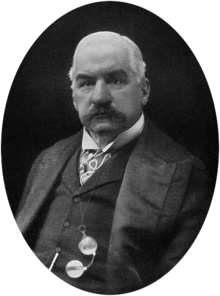Earlier, I wrote about C. S. Lewis’ graduation address concerning Inner Circles, and how the recruitment and advancement in such circles was illustrated in That Hideous Strength. The ever-increasing entanglement of the victims of such circles is lubricated by appeals to ego: now that you’ve reached our level, you are just so much smarter and cunning than those jokers in the circle you just advanced from. (Pay no attention to how you were played right up until you were welcomed in. That might trigger some actual thought, and we can’t have that.)
Anyone who leaves such a circle must be denounced (or denounced and assassinated, as the situation requires, as Prof. Hingest in Lewis’ book), not merely for the damage they might do by disclosing what they know, but by the psychological damage of such a direct assault on the self-image of the larger circles nearest the inner ring. How could anyone leave something so desirable, so powerful, so knowledgeable, so cool, as the inner ring? It must be demonstrated, for the sake of the little people, that the ex-inner-ringer was a problem, a fool, a traitor, someone to be disposed of.
It helps to appeal to people’s vanity. Hegel, Marx and Freud all use the old ‘of course, only enlightened people like you, the smart people who agree with me, truly understand; those who don’t hold and profess all we hold and teach are hopelessly benighted’ schtick to create their own cool kids club. Such a club is immune to all criticism, since such criticism only proves the critic to be hopelessly unenlightened and evil. Hegel, Marx and Freud are fundamentally Mean Girls; their followers’ deepest belief is that they are smarter than you. Every other belief is secondary: how do we know, say, all statements of being are false yet true insofar as they are suspended in dialectical synthesis, that everything is a social construct, that sexual repression is the origin of all psychological pathologies? Because we’re smarter than you, that’s how!
Since most of the tenets of these systems are, when stated in plain language, kind of stupid, it is required that you use the established vocabulary and phrases to make sure you never express them in words that reveal how stupid they are.
Read somewhere (oops, scholar fail!) that the management levels of idealistic organizations such as charities and religions are full of people with surprisingly little attachment to the professed ideology that supposedly drives the organization. On the more innocent end of the spectrum, they just like the people and the feeling of belonging; at the other end are, I imagine, power-hungry sociopaths. Current events in the Catholic Church and in our fine major political parties would do not appear to contradict this.
I would suppose the rank and file would be where you’d find the true believers, and in those who rise up through the ranks because of fervor and hard work. There must be, no doubt, some interesting dynamics, as the winners under Pournelle’s Iron Law might once in a while need some people who do the organization’s actual work, to keep up appearances. True believers would be handy for this. So I’d expect the higher reaches of an organization to have both those there for the power and true believers, with some interesting jostling when something needs to be done.
These thoughts brought to mind this exchange from Bella Dodd’s School of Darkness, where Dodd, who has finally become an open Communist after decades of working undercover in the New York teachers’ union, placing Reds and sympathizers in positions of power and influence. She gets a job with the US politburo – she is invited into what seemed the inner ring – and needs to go through the files:
As I began to prepare for the work I was assigned to do I was amazed at the lack of files of material on social questions such as housing and welfare. When I complained about this, Gil said: “Bella, we are a revolutionary party, not a reform group. We aren’t trying to patch up this bourgeois structure.”
I began to realize why the Party had no long-range program for welfare, hospitals, schools, or child care. They plagiarized programs from the various civil-service unions. Such reforms, if they fitted in, could be adapted to the taste of the moment . But reforms were anathema to communist long-range strategy, which stood instead for revolution and dictatorship of the proletariat .
What I find amazing here is that Dodd, obviously an intelligent woman, could work for the Commies for years and years, and not get a point that, even to this day, they are constantly making: the goal, the point of all their activities, is to bring about the revolution.(1) Marxists don’t want racial equality, good working conditions and pay, good social services, or any kind of justice. In fact, insofar as any of those things may occur, a Marxist would want to destroy them. Peace, harmony, justice and prosperity are the enemy. According to neo-Marxist dogma, anything that placates people, makes them happier with their lot, helps them live fulfilling, peaceful lives, can only be a tool of hegemonic oppression. Happy people must be made miserable; whatever makes them happy must be destroyed. Any steps taken that might improve things must be just that: steps. Those steps must lead to the revolution
Dodd became a communist in the first place because, in her eyes, they were the only ones doing anything to help during the Great Depression. It was precisely their activism in helping the downtrodden that attracted her. She them spent the next couple decades immersed in Marxist literature:
… I was at last beginning to see how ignorant I had become, how long since I had read anything except Party literature. I thought of our bookshelves stripped of books questioned by the Party, how when a writer was expelled from the Party his books went, too. I thought of the systematic rewriting of Soviet history, the revaluation, and in some cases the blotting out of any mention of such persons as Trotsky. I thought of the successive purges…
…In my time with the Party I had accumulated a large store of information about people and events, and often these had not fitted into the picture presented by the Party to its members . It was as if I held a thousand pieces of a jigsaw puzzle and could not fit them together. It irritated me, but when I thought of the testimony of witnesses before the Congressional Committee, some of whom I had known as Communists, much of the true picture suddenly came into focus . My store of odd pieces was beginning to develop into a recognizable picture. There had been many things I had not really understood. I had regarded the Communist Party as a poor man’s party, and thought the presence of certain men of wealth within it accidental . I now saw this was no accident. I regarded the Party as a monolithic organization with the leadership in the National Committee and the National Board. Now I saw this was only a facade placed there by the movement to create the illusion of the poor man’s party ; it was in reality a device to control the “common man” they so raucously championed.
Yet, somehow, she was surprised to discover that the Party’s interest in actions that might actually improve people’s lives was simply expedient, that it had no interest in improving people’s lives, but only in steps that lead to the Revolution. This goal of destroying the system is hardly a secret, yet Dodd could somehow miss it, even in all the works she’d read in the Party library. She was little more, if, indeed, anything more, than a Useful Idiot.
How many people who think Marx got a bum rap (e.g., every college kid), who think they support the general goals of the Marxists as they understand them, you know, fairness and justice and an end to bigotry and hatred and stuff, don’t realize that the goal is real, live violent warfare and the deaths of millions (e.g., me and mine)? If Bella Dodd can pull living with that level of cognitive dissonance off, how many others are doing so now?
But the scary part: there really are informed true believers, those who know what the goals are and enthusiastically support them. True, most of these folks – Antifa is the poster child – do not get the part where they, the enthusiastic purist revolutionaries, are the first to go once the Revolution succeeds in putting some vanguard or other in power. But that’s another kind of cultivated cluelessness.
And, of course, the top levels are occupied by the kind of sociopaths who generally get those kind of jobs, people for whom all this dogma and maneuvering is just a game. These folks are scarier still.
- Read somewhere (man, I got to start taking notes!) that when Mussolini took over and began to suppress the Communists, it was a largely popular move even among workers. For years, whenever they organized and struck, the workers were after improvement, while the leaders were after the revolution. This lead to some conflict and animosity, and worker frustration, to say the least, with the Communists.
























